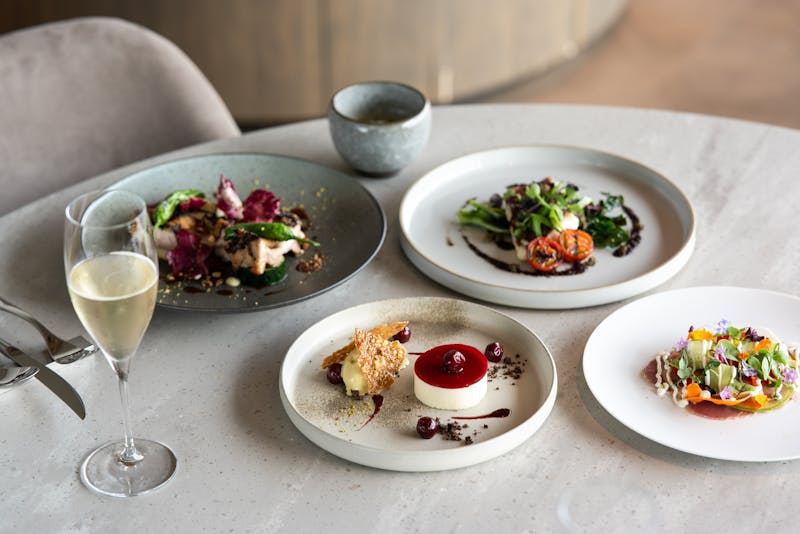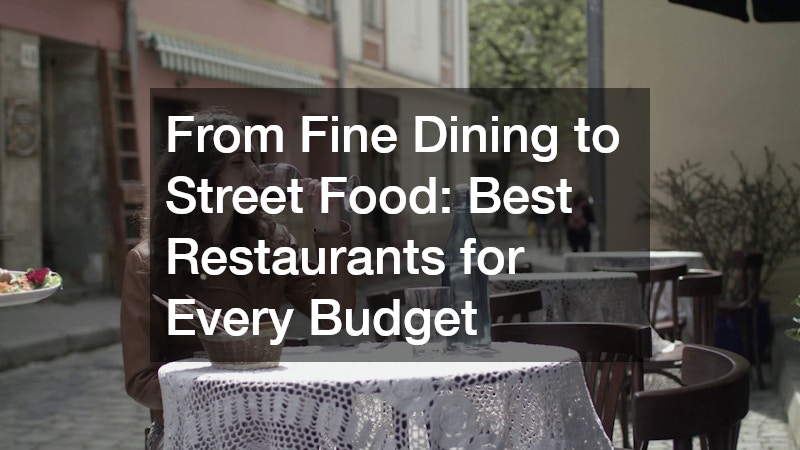
- Quality and presentation matter as much as flavor—expect premium ingredients, artistic plating, and thoughtful portioning designed to intrigue, not fill.
- Selecting the right appetizer enhances the dining flow—choose based on your appetite, main course, and sense of culinary adventure.
- Mindful eating deepens enjoyment—observe, smell, taste slowly, and appreciate how flavors and textures interact.
- Avoid common mistakes like eating too fast, ignoring the story behind the dish, or expecting large portions.
- Appetizer styles vary widely—from cold crudos and warm scallops to vegetable tartlets and amuse-bouches, each offers unique sensory experiences.
- You can recreate the spirit at home by using premium ingredients, balancing textures, and focusing on elegant plating.
For foodies venturing into the world of upscale dining, knowing what to expect—and how to enjoy—the appetizer course can add an extra dimension of pleasure. Appetizers, often small in portion but big in intention, are more than just a prelude to the main — they set the tone, showcase creativity, and prepare your palate.
In this detailed guide, we’ll demystify what distinguishes fine dining appetizers, why they matter, how to approach them, and how to get the most enjoyment out of the experience. Whether you’re dining out for the first time at a gourmet restaurant or simply curious about elevating your food awareness, this article has you covered.
What is a Fine Dining Appetizer?
While the word “appetizer” might evoke any starter dish, the term fine dining appetizers carries a distinct meaning. In upscale restaurants, these starters are crafted with exceptional attention to detail—premium ingredients, refined techniques, elegant presentation, and thoughtful portion sizes. According to one source, they function as the opening act in a gourmet meal, signalling the chef’s intent and the restaurant’s tone.
In this sense, a fine dining appetizer is not just “something to fill you up before the main,” but a standalone expression of culinary craft.
Key characteristics of a fine dining appetizer
- Premium or seasonal ingredients (for example, truffle, caviar, specialty seafood)
- Artistic plating and aesthetic presentation
- Balanced flavours and interesting textures
- Smaller portion sizes that promote anticipation rather than satiation
- A sense of narrative or theme that ties into the rest of the meal
Why the appetizer matters in fine dining
The appetizer serves several important roles:
- It sets the tone for the menu — whether classical, modernist, regional, or fusion.
- It awakens the palate, preparing you for the layers of taste and texture to come.
- It introduces the chef’s style or concept, acting as a micro-expression of what’s ahead.
- It provides a moment of delight early, which can enhance your overall dining experience.
Understanding this helps you appreciate that when you order an appetizer in a high-end setting, you’re engaging with more than just food—you’re participating in a designed sensory journey.
How Do Fine Dining Appetizers Differ From Regular Starters?

If you’ve eaten in casual restaurants, you may have seen “appetizer” or “starter” on the menu and assumed it meant simply something small to nibble. The world of fine dining, however, elevates this concept. As one source notes, fine dining appetizers differ markedly from their casual counterparts both in ingredients, preparation, and presentation.
For the foodie keen to understand, this distinction can deepen the appreciation of what you’re served.
Key contrasts
- Ingredient quality: Casual starters may use everyday ingredients; fine dining tends toward premium, often seasonal or locally sourced.
- Technique and complexity: Fine dining may involve sous vide, confit, precision plating, or multi-component garnishes.
- Portion and intention: A casual appetizer might be large and stand in for a meal; fine dining appetizers are smaller, crafted to intrigue rather than fill.
- Presentation: Fine dining dishes are often plated with artistic intention, visually thoughtful rather than simply functional.
- Purpose in the meal flow: In fine dining, the appetizer is part of a larger narrative; in casual settings, it may simply be a separate dish chosen by the diner.
Why this matters for you as a foodie
Recognising these differences helps you shift from just eating to experiencing. When you approach a fine dining appetizer with awareness, you’re better able to enjoy the detail—textures, contrasts, plating, flavour progression—and therefore your meal becomes more memorable. You’ll also know what to expect (and what not to expect) in terms of size, pacing, and cost.
What Can You Expect When You Order Fine Dining Appetizers?
Walking into a high-end restaurant, you might wonder: “What will my appetizer course be like?” This section helps set realistic expectations—from the portion size to flavour complexity, to how it fits into your dining timeline. Knowing what to look for means you can relax and savour the experience rather than being surprised (or disappointed).
Size and pace
- Appetizers in fine dining are typically small; you don’t want to fill up before the main course.
- The pacing of service may allow you to savour the start of the meal before moving into more substantial dishes.
- Because of the smaller portion, you may pay a higher cost per ounce than you expect—but you’re paying for craft.
Complexity and flavour
- Expect layered flavours and often contrasting textures. For example, a soft mousse might sit beside a crunchy crisp, or a mild base with an intense garnish.
- The chef might use ingredients in unexpected combinations to intrigue the palate.
- Presentation will often emphasise visual appeal—colour, height, garnish, negative space.
Rituals and etiquette
- The server might explain the dish; feel free to ask for a brief description if you’re curious.
- Tasting slowly, noticing flavours, textures, and how they interact can deepen enjoyment.
- Don’t be afraid to ask questions—foodies appreciate the story behind the dish.
Pairing and context
- An appetizer may be designed to pair with a specific wine or cocktail—so if offered, consider light wine or sparkling to begin.
- The appetizer sets up the theme of the meal—for example, a seafood amuse-bouche that signals a menu focused on the coast, or a vegetable-forward starter hinting at a vegetarian-centric meal.
By knowing what to expect, you’ll approach your appetizer not just as a beginning plate, but as an experience in its own right.
Fine Dining Appetizers: Categories & Styles
As a foodie, you’ll be curious about the different types of fine dining appetizers you might encounter. From cold crudos to warm bites, vegetarian to seafood, modernist to regional—recognising these categories enriches your dining vocabulary and helps you pick dishes you’ll truly enjoy.
1. Cold starters
These often emphasise freshness, delicate flavours, and crisp textures. Examples include crudo (thinly sliced raw fish), chilled soups, chilled seafood salads, or light canapés. According to one listing of fine dining appetizers, cold starters include items like ceviche, salmon gravlax, beet carpaccio, and avocado-crab salad.
2. Warm or hot starters
Here, the emphasis shifts to cooked elements, deeper savoury flavours, and possibly more robust textures. Items might include seared scallops, sautéed clams, mushroom ragouts, or flaky pastry bites. Warm fine dining appetizers often showcase the chef’s control of heat and timing.
3. Vegetarian or plant-forward starters
Even in fine dining, an appetizer doesn’t have to mean meat or seafood. Many menus include vegetable-centric starters—wild mushrooms, lentil ragout, vegetable tartlets, or inventive salads. These can spotlight seasonal produce and show creativity without relying on protein.
4. Signature or themed bites
Some restaurants create signature appetizers that reflect the chef’s identity or the restaurant’s theme—such as a fusion of regional ingredients, a modern reinterpretation of a classic, or a tasting plate of miniature bites. These can become talking points for foodies and often reveal the chef’s priorities in flavour and design.
Why exploring styles matters
By recognizing these styles, you can:
- Choose an appetizer that aligns with your personal taste (light vs bold, veggie vs seafood).
- Understand what you’re being served and why.
- Communicate better with servers or sommeliers about your preferences.
- Appreciate the thought behind the dish rather than just eating it.
How to Select the Right Fine Dining Appetizers for You
When you’re faced with a menu of enticing starter options, how do you pick the one that will deliver pleasure and complement your meal? As a foodie, you want to make choices that maximise enjoyment, speak to your flavour preferences, and fit the context of the full dining experience.
Tips for selecting your appetizer
- Consider your appetite and the number of courses ahead: If you’re ordering multiple courses, choose something lighter.
- Think about the main course: If your main is heavy (e.g., red meat), a lighter appetizer might be ideal; if the main is lighter (e.g., fish or vegetarian), you might choose a more robust starter.
- Match your enthusiasm for adventurous flavours: If you love trying new things, opt for a creative or signature starter. If you prefer familiar flavours, choose something classic.
- Check for dietary preferences: Many fine dining restaurants will indicate vegetarian, gluten-free, or other dietary options for starters.
- Ask for microlens of flavour: If you’re curious about the chef’s style, ask the server, “Which appetizer best represents the kitchen?”
- Pairing consideration: If you plan to pair with wine or cocktails, check with your server about any recommended pairing for a particular appetizer.
Common mistakes to avoid
- Picking something too heavy and spoiling your main.
- Selecting the cheapest starter solely for cost reasons—it may lack the finesse the restaurant offers.
- Overlooking presentation and intention—just because it’s small doesn’t mean it’s unimportant.
- Not asking about unexpected ingredients (if allergies or strong dislikes apply).
With these guidelines, you can approach the appetizer portion of your meal with intention and enjoyment rather than leaving it to chance.
How to Enjoy and Appreciate Your Fine Dining Appetizers

Once your appetizer arrives, how you engage with it can enhance your experience. It’s not just about eating—it’s about tasting, observing, and appreciating. For a foodie, this mindful approach allows you to extract more value from the dish, both in flavour and in story.
Enjoyment strategies
- Observe and pause: Before you dig in, take a moment to admire the plating, colours, garnish, and texture. Notice how the dish is assembled.
- Smell first: Bring the food close and breathe in the aroma. Good fine dining appetizers often employ scent as a component.
- First taste intentionally: Take a small initial bite to sense the base flavour, then proceed to other components to discover interplay.
- Note the texture contrasts: Good starters often juxtapose soft and crisp, hot and cold, creamy and crunchy.
- Pair consciously: If you’re pairing a drink, take a sip before the bite and then after to detect how the pairing changes the flavour.
- Reflect on what you tasted: What stands out? Which ingredient or technique grabbed your attention? This reflection enriches the experience and builds your foodie knowledge.
Etiquette and social context
- In fine dining settings, you may have multiple dishes ahead—pace yourself so you’re ready.
- Engage with your dining companions about the dish—asking questions like “What do you taste first?” or “What do you think the garnish adds?” invites conversation and adds to the social pleasure.
- If you’re taking photos (for memory or social media), do it quickly and gracefully so the dish doesn’t get cold or lose its impact.
- Be open to the chef’s intent—sometimes the smallest bitter note, unusual garnish, or unconventional flavour is there for a purpose.
Common Types of Fine Dining Appetizers You’ll Encounter
For foodies looking to familiarise themselves, here are some of the common appetizer forms you might see on a fine dining menu. Being aware helps you recognise them and appreciate them more deeply.
Examples of starters
- Of course the seafood crudo or tartare – thinly sliced raw fish or shellfish dressed with citrus, herbs and oil.
- Foie gras torchon or mousse – a luxury ingredient in a refined presentation.
- Truffle arancini or mushroom tartlet – rich, earthy flavours using premium mushrooms or truffles.
- Seared scallops or octopus with modern accents – warm, cooked seafood often plated with modernist sides.
- Vegetable-centric delicacies – for example, beet carpaccio, wild mushroom–herb blends, compressed figs with ricotta.
- Mini tasting bites or amuse-bouche – very small, complimentary dishes at high-end restaurants meant to provide a bite before the starter proper.
What to expect in terms of cost
Because of the premium nature of ingredients, fine dining appetizers can carry a higher price relative to portion size than more casual fare. That said, in return you’re getting craft, presentation and an experience rather than just volume.
Why“Fine Dining Appetizers” Matter for Foodies
If you’re reading this article, you might already be typing phrases like “fine dining appetizers” into a search engine or menu search. Here’s why it makes sense for your journey as a foodie.
- It captures intent: you’re interested specifically in appetizers within a fine-dining context, not casual starters.
- It provides focus: by narrowing down to “fine dining appetizers,” you’re guiding yourself toward dishes with intention and craft, rather than broad and generic.
- It enables comparison and learning: when you search “fine dining appetizers,” you’ll access content that explains—ingredients, techniques, presentation, cost—helping you grow your foodie vocabulary.
- It helps with menu choices: when browsing a restaurant menu or looking at reviews, seeing the term “fine dining appetizers” (or variations) helps you anticipate what kind of starter you’re dealing with.
So as you explore, talk about, or write about starters in an upscale dining experience, anchored by the keyword “fine dining appetizers,” you’re aligning yourself with both the culinary nuance and the search-friendly language that brings relevant content.
Mistakes to Avoid When Ordering or Enjoying Fine Dining Appetizers
Even foodies can slip up when approaching the appetizer course. Being aware of common missteps helps you get the most from the experience.
Mistakes to watch out for
- Ordering a heavy starter when you have several courses ahead: If you’re doing a multi-course meal, a dense appetizer can spoil your appetite for the main.
- Skipping the description or story behind the dish: Many fine dining appetizers carry narrative or thematic meaning—missing that means missing part of the experience.
- Eating too fast: Because portions are smaller and flavours layered, rushing through might reduce your ability to appreciate the nuances.
- Ignoring pairing suggestions: Some dishes are designed to interact with a specific wine or cocktail—ignoring this may mean you miss an intentional harmony.
- Focusing only on volume or size: In fine dining, value comes from craft, not just quantity. Expect smaller plates, but richer experiences.
- Failing to observe or appreciate presentation: The plating is part of the dish; missing it undermines the full sensory effect.
By avoiding these mistakes, you can approach your appetizer with the right mindset and fully savour the craft on display.
Fine Dining Appetizers at Home: Can You Recreate the Experience?
Just because you’re not dining out doesn’t mean you can’t enjoy the spirit of fine dining appetizers at home. For foodies who love to experiment, bringing a bit of the upscale starter course into your own kitchen can be rewarding. Here’s how you might approach it.
Tips to replicate the experience
- Use premium ingredients when possible: even a simple dish benefits from higher-quality components.
- Focus on plating: take time to arrange the dish attractively—height, garnish, colour contrast matter.
- Keep portions small: treat the starter as a prelude, not a full meal.
- Balance flavours and textures: aim for one dominant flavour and one contrasting element (e.g., silky and crunchy, acidic and soft).
- Consider temperature contrast: a cold element with a warm garnish can elevate the dish.
- Invite pairing: even a simple wine or craft cocktail can enhance the enjoyment of an at-home starter.
- Tell a story: think of the dish as an introduction to the rest of the meal. What does it suggest about what’s to come?
While you might not replicate the exact complexity or plating of a restaurant chef, you can certainly invoke the same mindset, and the result will impress yourself and your guests.
Final Thoughts: Enjoying Fine Dining Appetizers as a Foodie
As you’ve now learned, fine dining appetizers are more than mere starters—they’re carefully crafted, intention-filled bites that set the stage for the meal ahead. By understanding what defines them, how they differ from casual starters, what to expect, how to select, how to enjoy, and even how to replicate them at home, you equip yourself with the knowledge to be a more mindful diner. For foodies, this means more than tasting—it means appreciating the artistry, intent, and sensory journey at the beginning of the dining experience.
So next time you find yourself perusing a gourmet menu and you see “fine dining appetizers,” you’ll know: this is your gateway to the story, flavour, and craft the chef wants to tell. Savor it purposefully, eat thoughtfully, and enjoy the beginning of your meal as much as the main course that follows.
Share This :


